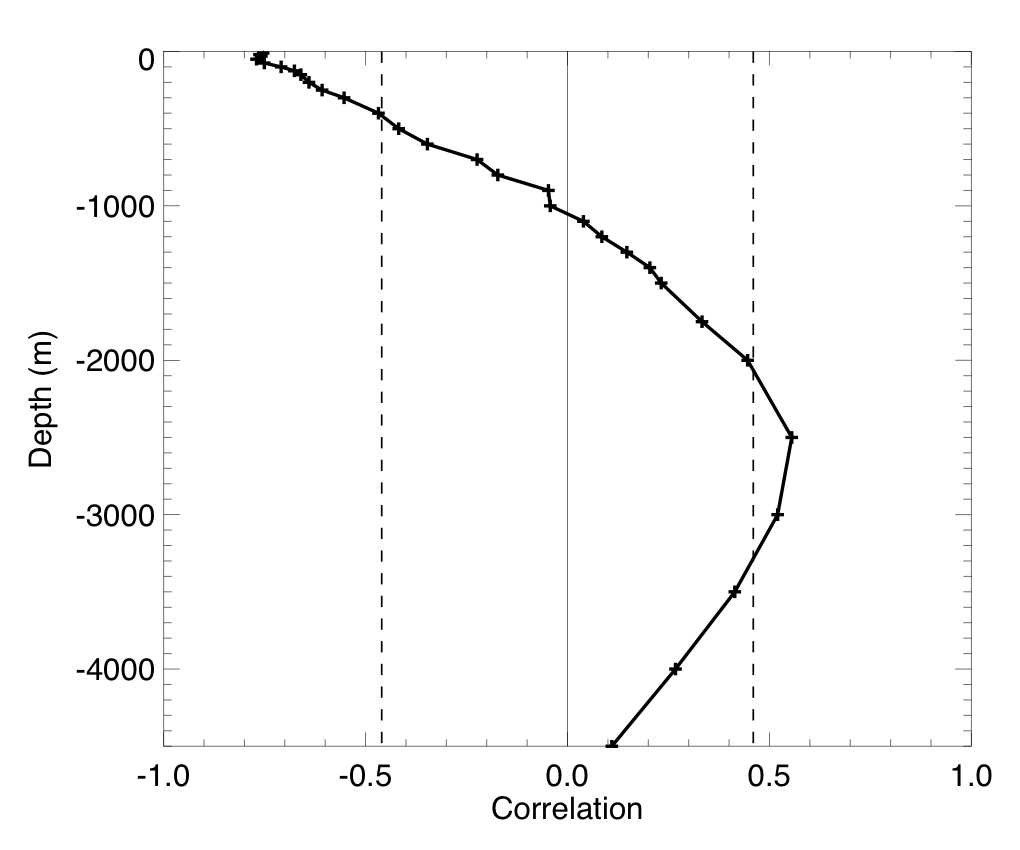
|
||||||||||||||||
|

Climate Feedbacks Deep ocean heat uptake as a major source of spread in transient climate change simulations A central contemporary challenge of climate science is to reduce uncertainties of climate change projections. Indeed, even the simplest possible metric of climate change -- the global increase of surface air temperature in response to a given radiative forcing -- remains uncertain. Surface warming in the transient response to a given external perturbation of the Earth's energy budget mainly depends of two factors: how much climate feedbacks dampen or enhance the initial radiative perturbation, and the rate at which heat is removed from the surface to deeper ocean. In this paper, we show that deep ocean heat uptake is a major source of spread in simulations of 21st century climate change. As shown in Figure 1, models with deeper baseline polar mixed layers are associated with larger deep ocean warming and smaller global surface warming: models with deeper mixed layers at high latitudes in the present climate are transferring more of the radiative perturbation to the deep ocean, reducing surface warming in the future climate. Based on this result, we set forth an observational constraint on polar vertical oceanic mixing. This constraint suggests that many models may overestimate the efficiency of polar oceanic mixing and therefore may underestimate future surface warming. Thus to reduce climate change uncertainties at time-scales relevant for policy-making, improved understanding and modelling of oceanic mixing at high latitudes is crucial.
Figure 1. Inter-model correlation between the baseline mixed layer depth (annual maximum) averaged north of 56˚N and south of 68˚S (MLDp) and globally averaged oceanic temperature change between 2071-2099 and 1950-1999 at different depths. The dashed lines show the 0.05 significance level. Download the publication (Bo¨¦ et. al. 2009) describing these results in more detail. |
|||||||||||||||

